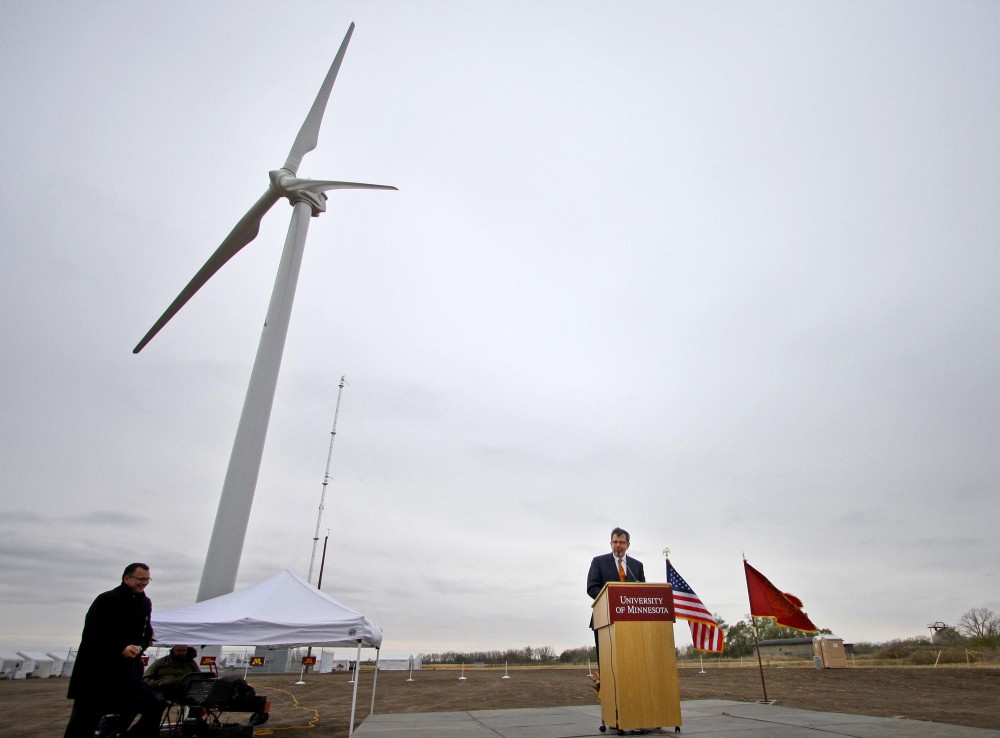University researcher Fotis Sotiropoulos made one last phone call Tuesday afternoon, and the person on the other end flipped the switch on a wind turbine at the Eolos Wind Research Station.
The 426-foot tall, 2.5-megawatt wind turbine is part of the University of Minnesota Outreach, Research and Education Park in Rosemount, Minn.
The station includes a meteorological tower, used to collect data on the wind entering and leaving the turbine, wind velocity and turbulence, weather conditions and the turbineâÄôs efficiency.
Though UMore Park has been in development for more than a decade, the turbine project began in early 2010 when the University received a grant from the U.S. Department of Energy for $7.9 million. The grant funded the construction and some of the ongoing wind energy research.
The venture is funded in part by another $3.4 million from partnering companies and the University.
The University and the companies working with it are interested in developing new technologies to increase the efficiency of wind energy, said Jeff Marr, a lead researcher for the wind energy station.
Marr said the research station will benefit University students by employing them to aid in research as well as offering them a networking tool to expose them to companies in the industry.
He said the station is unique because there are very few sites of this magnitude owned by a university. He said very few sites are collaborations between a university, local and national companies and the federal government.
During George W. BushâÄôs presidency, a goal was set that 20 percent of U.S. energy come from wind by the year 2030. The administration created a roadmap for how to meet this goal and the University is acting as a part of that plan, Marr said.
The turbine was designed and constructed by Clipper Windpower, a wind energy technology company.
Construction on the turbine began in May, leading up to ThursdayâÄôs event, Marr said. Aside from it being the official launch of the turbine, the event was used as an education and outreach tool.
Researchers invited members of the community, like students and staff from Dakota County Technical College and Cedar Park Elementary STEM School, to learn more about the projects at the station.
Marr said each of the many research projects going on at the station involves an industry partner.
3M is one of several local companies working with the station. Marr said together theyâÄôre working to create a film to cover the surface of the turbine blade. The film features microscopic roughness, unable to be felt by the human hand, which reduces friction. It allows the turbine to be more efficient by converting more energy from the wind.








